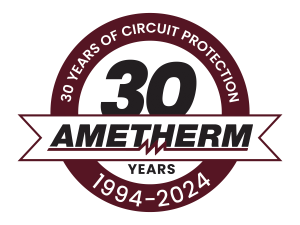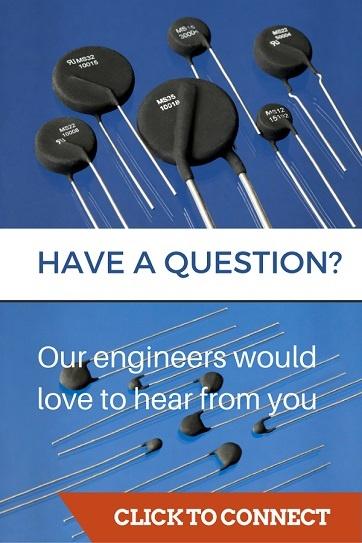
Ametherm is a trusted name in the field of inrush current limiting thermistors, providing solutions for a wide range of applications. To help you choose the right inrush thermistor for your specific needs, Ametherm offers three different lead types. These leads are crucial for proper installation and can significantly impact the effectiveness of the thermistor in your circuit.
No Kink, Straight Leads: No Dash
When you come across an Ametherm inrush thermistor without any dash (-) after the part number, it signifies straight leads. Straight leads are a common choice for various applications and are known for their simple design and ease of use. These leads extend directly from the body of the thermistor, making it easy to mount and connect in your circuit.

Inside Kink: -A After Part Number
In cases where you see a “-A” after the part number, it means the inrush thermistor has inside kinked leads. Inside kinked leads are bent toward the center of the thermistor body. This design allows for efficient PCB mounting, making it easier to secure the thermistor on densely populated circuit boards. Inside kinked leads can make installation simple and save valuable space in your design.

Outside Kink: -B After Part Number
If you see a part number with a “-B” suffix, it signifies that the inrush thermistor comes with outside kinked leads. These leads bend away from the thermistor body, provides greater clearance, and easier access for mounting and connecting. This configuration is ideal for applications where external clearance or accessibility is essential. Outside kinked leads make it more convenient to install the thermistor into your design, especially when space is not important.

Selecting the Right Lead Type
Choosing the appropriate lead type for your Ametherm inrush thermistor is essential to ensure the thermistor’s optimal performance and integration into your circuit. Here’s a quick guide to help you make the right choice:
1. Straight Leads: Opt for straight leads for straightforward installations and when space is not a primary concern.
2. Inside Kinked Leads (-A): Use inside kinked leads when you need to mount the thermistor in tight spaces or on crowded PCBs.
3. Outside Kinked Leads (-B): Select outside kinked leads when external clearance and ease of access are essential in your application.
Conclusion
Ametherm’s inrush thermistors are available with three lead types, each designed to cater to different installation needs. Whether you choose straight leads, inside kinked leads, or outside kinked leads, it’s crucial to select the one that aligns with your specific application requirements. By understanding the differences between these lead types, you can make an informed decision to ensure the seamless integration of Ametherm’s inrush thermistors into your electrical circuits.
Ametherm thanks you for taking the time to read our Blog posts. If you have any questions, please contact us, or fill out the form below and we will respond right away.
Visit Our Distributors to See Availability of Our Inrush Current Limiters







